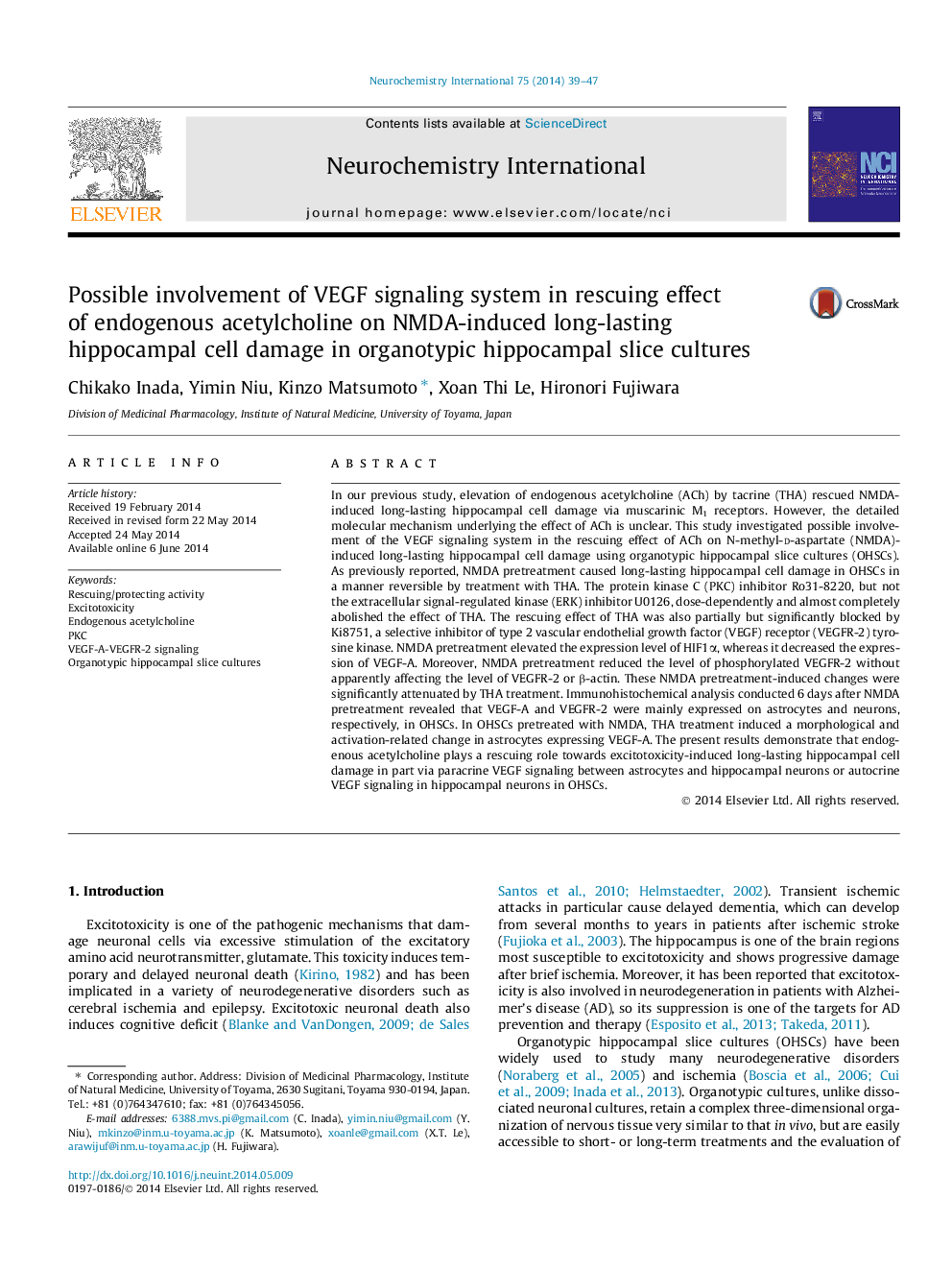| Article ID | Journal | Published Year | Pages | File Type |
|---|---|---|---|---|
| 2200502 | Neurochemistry International | 2014 | 9 Pages |
•Tacrine (THA) rescued hippocampal cells from NMDA-induced delayed damage in slice cultures.•The effect of THA was blocked by inhibition of PKC and VEGF receptor 2 (VEGFR-2).•THA reversed the levels of VEGF and phospho-VEGFR-2 reduced by NMDA pretreatment.•The rescuing effect of THA may involve PKC mechanisms and VEGF-VEGFR-2 signaling.
In our previous study, elevation of endogenous acetylcholine (ACh) by tacrine (THA) rescued NMDA-induced long-lasting hippocampal cell damage via muscarinic M1 receptors. However, the detailed molecular mechanism underlying the effect of ACh is unclear. This study investigated possible involvement of the VEGF signaling system in the rescuing effect of ACh on N-methyl-d-aspartate (NMDA)-induced long-lasting hippocampal cell damage using organotypic hippocampal slice cultures (OHSCs). As previously reported, NMDA pretreatment caused long-lasting hippocampal cell damage in OHSCs in a manner reversible by treatment with THA. The protein kinase C (PKC) inhibitor Ro31-8220, but not the extracellular signal-regulated kinase (ERK) inhibitor U0126, dose-dependently and almost completely abolished the effect of THA. The rescuing effect of THA was also partially but significantly blocked by Ki8751, a selective inhibitor of type 2 vascular endothelial growth factor (VEGF) receptor (VEGFR-2) tyrosine kinase. NMDA pretreatment elevated the expression level of HIF1α, whereas it decreased the expression of VEGF-A. Moreover, NMDA pretreatment reduced the level of phosphorylated VEGFR-2 without apparently affecting the level of VEGFR-2 or β-actin. These NMDA pretreatment-induced changes were significantly attenuated by THA treatment. Immunohistochemical analysis conducted 6 days after NMDA pretreatment revealed that VEGF-A and VEGFR-2 were mainly expressed on astrocytes and neurons, respectively, in OHSCs. In OHSCs pretreated with NMDA, THA treatment induced a morphological and activation-related change in astrocytes expressing VEGF-A. The present results demonstrate that endogenous acetylcholine plays a rescuing role towards excitotoxicity-induced long-lasting hippocampal cell damage in part via paracrine VEGF signaling between astrocytes and hippocampal neurons or autocrine VEGF signaling in hippocampal neurons in OHSCs.
